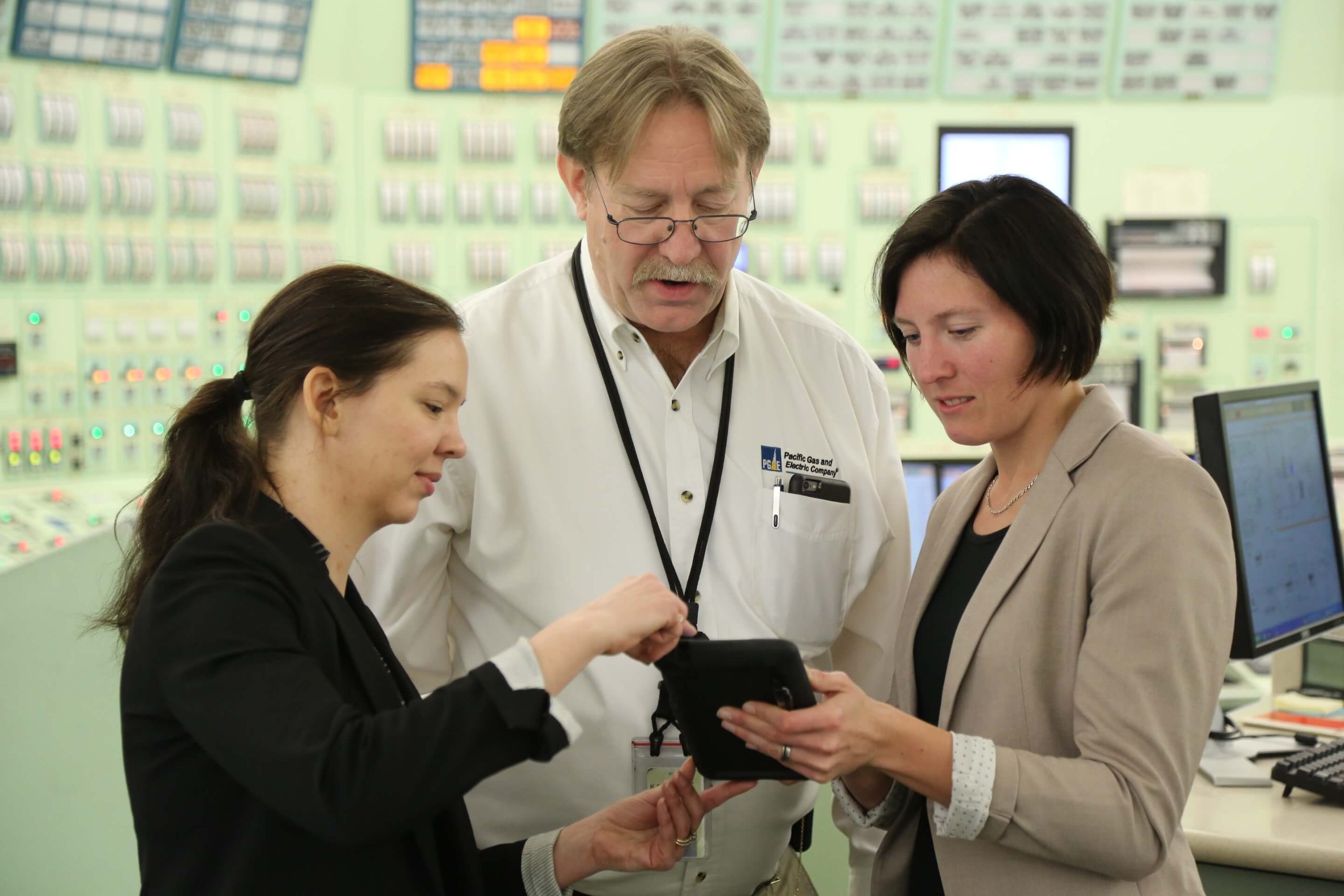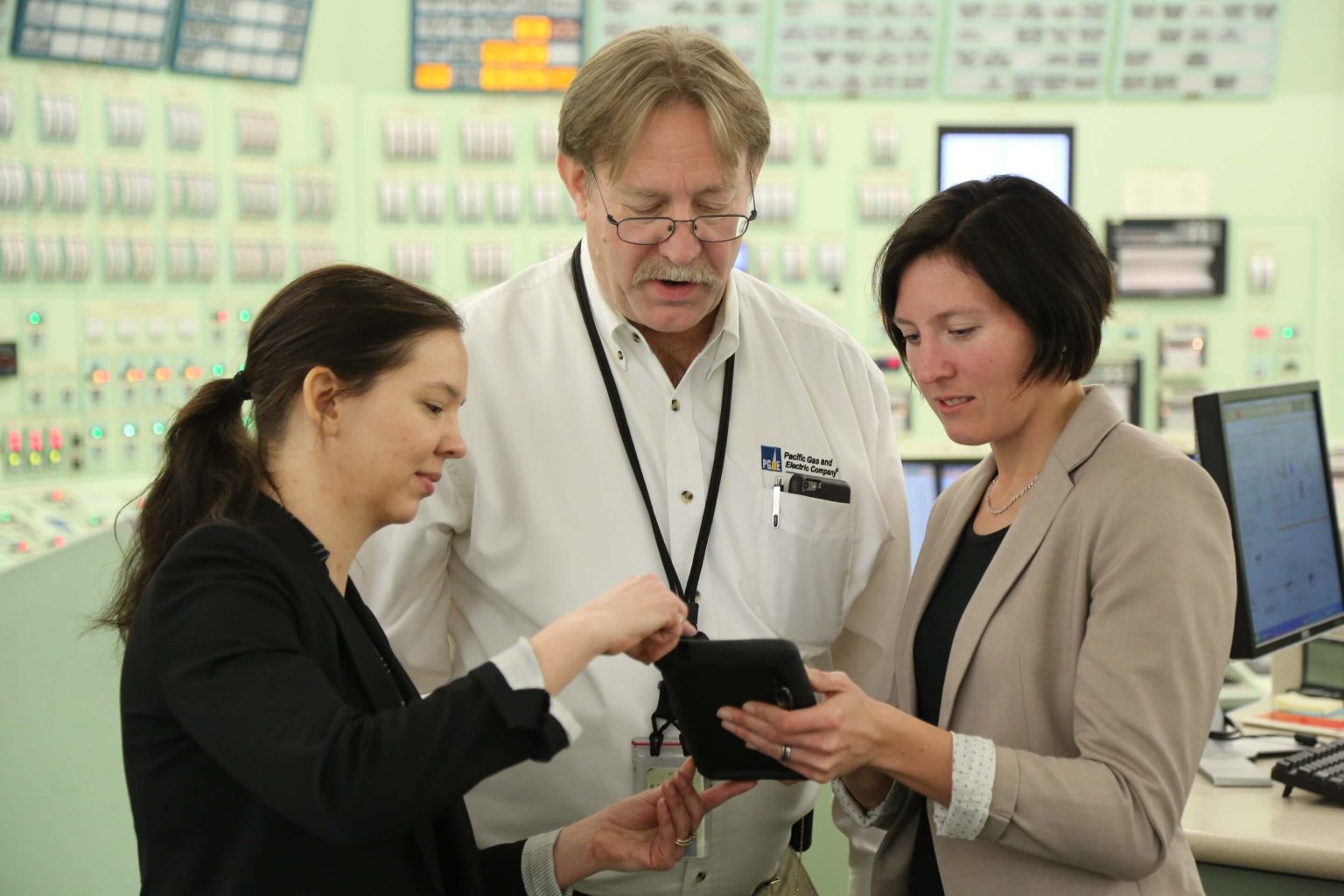A nuclear industry task force led by INL human factors researcher Johanna H. Oxstrand has been instrumental in an ongoing effort to take advantage of the efficiency and safety benefits of computer-based procedures and work processes. Oxstrand is the principal investigator of computer-based procedures research for DOE’s Light Water Reactor Sustainability (LWRS) Program.
The industry task force known as NEWPER – Nuclear Electronic Work Packages-Enterprise Requirements – was kicked off by Nuclear Information Technology Strategic Leadership (NITSL), a nuclear industry information technology group. NITSL provides a forum for leadership and strategic guidance for the consistent and efficient application and support of information technologies.
“It is exciting to see operators of the current nuclear plants beginning to implement new processes that take advantage of our work under the LWRS Program,” Oxstrand said. “It’s already reflected in recent requests for proposals by plant operators to their information technology suppliers. Not only that, but the guidance issued in reports prepared through NEWPER will soon benefit the entire industry as it gets incorporated as a standard for computer-based procedures by the Procedure Professionals Association.”
The strong industry engagement in NEWPER mirrors an industrywide attitude shift toward phasing out the use of paper-based work processes in favor of streamlined electronic processes. The main goal of the NEWPER initiative was to define requirements for electronic work package (eWP) and computer-based procedure solutions, which each utility can use as a basis for a solution tailored to their specific needs.
“Not only did the NEWPER effort provide core requirements but it opened discussions on lessons learned from research projects and real-life experiences from those who had implemented a solution,” said Bruce Gordon, a client services manager at Palo Verde Generating Station in Arizona. “At Palo Verde, we’re not interested in only a paper process replacement, but also in developing a full digital architecture that supports full integration with the plant. The NEWPER initiative was an excellent catalyst in moving us toward our future vision.”

The NEWPER task force includes more than 130 members, representing 18 commercial nuclear utilities in the United States and 11 of vendors of eWP solutions. Organizations such as the Electric Power Research Institute, the Institute of Nuclear Power Operations, EDF Energy, Idaho National Laboratory, Los Alamos National Laboratory, and Savannah River National Laboratory participate in these efforts.
“INL’s leadership in human factors research continues to play a pivotal role in the nuclear industry as we work to incorporate new technologies into operation of the power reactor fleet,” said Sandy Zylka, vice president and co-founder of NextAxiom Technology, a San Francisco-based software firm that specializes in providing integration software for large-scale industries and utilities. “Through the LWRS Program, INL researchers coupled innovative ideas with empirical evidence to demonstrate that computer-based procedures can help operators improve safety and efficiency at the same time.”
Based on a design guidance report issued by the LWRS Program in December 2016, NEWPER published a large set of utility-generic functional requirements for eWP solutions. These requirements describe the fundamental functionality needed for all roles involved in the work management process, such as planners, supervisors, craft, and archiving staff. The final NEWPER functional requirements report will be published as a Procedure Professionals Association standard in June 2017.
NEWPER report:
- Functional Requirements for an Electronic Work Package System (INL/EXT-16-40501, NITSL-INL-2016-01)
LWRS Program report:
- Design Guidance for Computer-Based Procedures for Field Workers (INL/EXT-16-39808)
The Light Water Reactor Sustainability (LWRS) Program is an R&D program sponsored by DOE with participation by NRC and the nuclear industry. LWRS leverages the extensive capabilities of DOE’s national labs to provide the technical foundation for licensing and managing the long-term safe operation of existing nuclear power plants.





